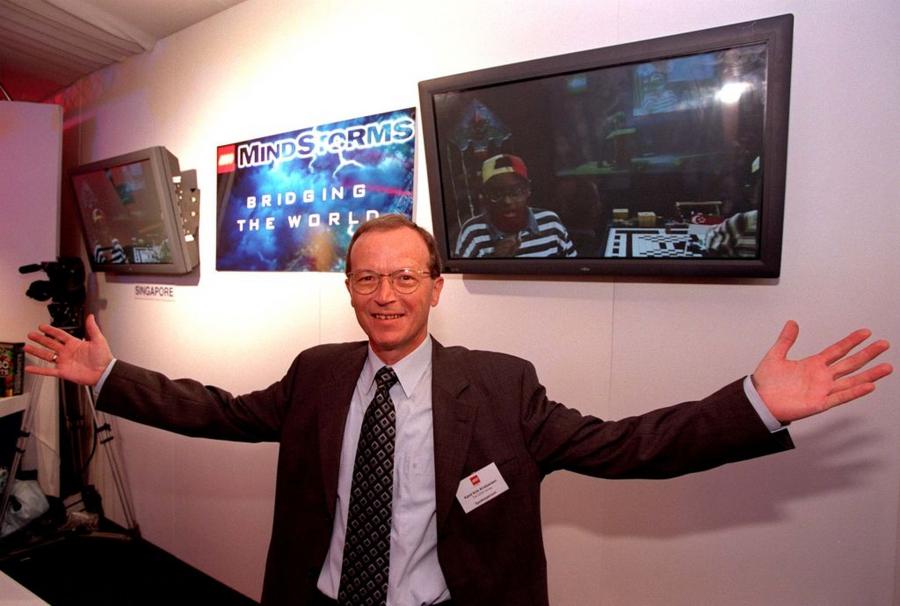LEGO is one of those toys that's so ubiquitous that it can be strange to think of someone inventing it. But someone actually had to come up with the idea for those little colorful building bricks beloved by children and children-at-heart all over the world, and it is generally believed to have been Godtfred Kirk Kristiansen who took his father's woodworking shop and developed it into the revolutionary toy brand. Godtfred's son, Kjeld Kirk Kristiansen, who at one time had a 75% stake in the family business, is one of the richest people in Denmark, with a fortune of some $6 billion.
The story of Kjeld Kirk Kristiansen 's $6 billion fortune isn't just that of a children's toy brand. LEGO is now a multimedia franchise that spans everything from feature films and video games to theme parks, thanks in large part to Kristiansen 's shepherding of the brand. He became the president and CEO of the company in 1979, a position he held until 2004, an incredibly important period in the development of LEGO. During his tenure as head of the company, LEGO introduced such mainstays as LEGO themes and the iconic LEGO minifigures, as well as the very lucrative licensing partnerships that give us LEGO toys and games based on popular properties like Batman, "Star Wars," and "The Lord of the Rings."

Matthew Fearn – PA Images/PA Images via Getty Images
But long before all that, LEGO began its life as a humble wooden toy company in Denmark way back in 1932. LEGO patriarch Ole Kirk Kristiansen was a carpenter who moved into toys after the Great Depression obliterated his household goods business. In 1947, the iconic interlocking bricks were introduced, and the LEGO brand was truly off and running (in case you were wondering, the name LEGO is a play on words, a contraction of the Danish phrase leg godt, which means "play well").
LEGO was part of Kristiansen's life from the time he was born in 1947. He is credited as having been an inspiration for many of LEGO's early products, and even worked as a tester of both play sets and their instructions as a child. He also served as a sort of face of the company during this time, appearing on packaging and in ads for the brand. So, it probably wasn't a surprise when he became president and CEO of The LEGO Group in 1979 – but it was a surprise that he was able to bring the company to new heights, starting with his own personal development of the LEGO minifgure, the tiny person-shaped toys that are now an integral part of the LEGO brand.
Growth was steady up to the 1990s, when LEGO "Star Wars" playsets dominated toy store shelves and ushered in countless other such brand partnerships. In 1996, he was named chairman of Krikbi, his family's investment firm, which at that time had a 75 percent stake in the LEGO company, with the other 25 percent belonging to The LEGO Foundation.
The future seemed bright for LEGO at that time, but strong competition from rival toy bands like Hasbro darkened it significantly during the early 2000s, when Kristiansen presided over layoffs and the discontinuation of multiple product lines. He stepped down in 2004, replaced as president and CEO by his son Thomas, and eventually a financial reorganization left him with a 51 percent stake in LEGO, with the other 49 percent again going to the company's charitable wing. Since then, the brand has bounced back in a big way, and has even had success in the movie business, with films like "The LEGO Movie" racking up big box office receipts and inspiring sequels and spin-offs.
Most recently, Kristiansen made headlines with his $1 billion investment in Epic Games, the company that makes "Fortnite." This investment, which was matched by Sony with its own $1 billion investment, shows Kristiansen's interest in continuing to move forward into the worlds of virtual reality, where it's safe to say that LEGO will have a presence in some form or another.
Read more: Imagine How Rich Would You Be If You Owned 75% Of LEGO…


0 Comments